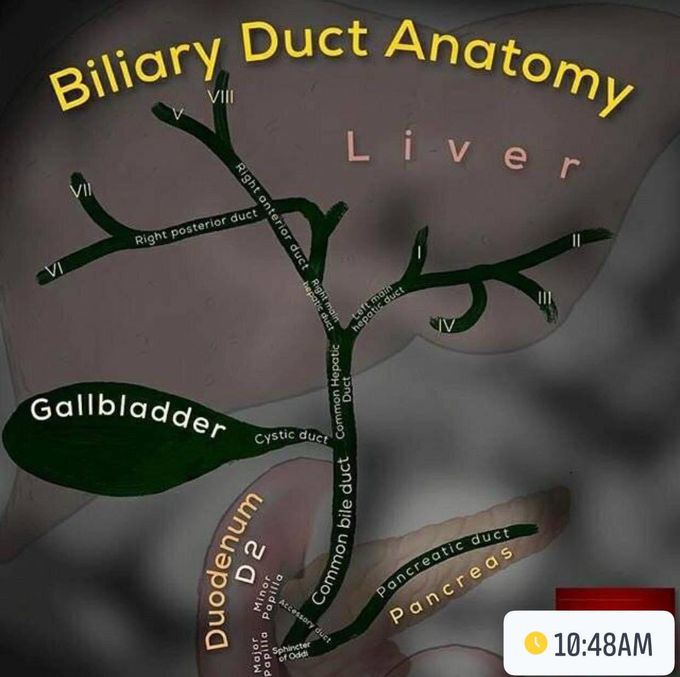


Biliary Duct Anatomy
This schematic presentation represents anatomy of biliary duct tract which is easy to memorise step by step. It starts with: > The intrahepatic biliary ducts drain bile from the liver (each segment of the liver is represented by Roman numerals on the diagram) into the right and left main hepatic which converge to form the common hepatic duct. > This is then joined by the cystic duct which connects the gallbladder. Sometimes stones in the cystic duct can compress the common hepatic duct or common bile duct resulting in obstruction - called Mirzizzi syndrome. > Once the cystic duct has joined the common hepatic duct it is now termed as the common bile duct which in normal variant anatomy joins up with the main pancreatic duct at the ampulla of Vater and drains into the major papilla. > The ampulla is surrounded by a circular layer of muscle known as the Sphincter of Oddi. > The accessory duct of Santorini drains into the minor papilla and the main pancreatic duct drains into the major papilla - there can be variant anatomy! In pancreatic divisum the ducts are separate and most of the pancreas is drained through the minor papilla - this puts the patient at risk of recurrent pancreatitis. Via Medicos

